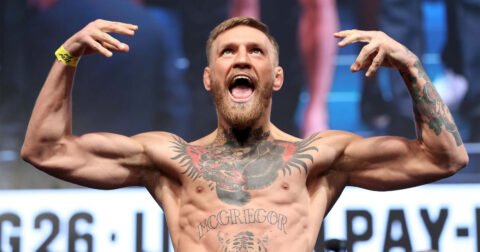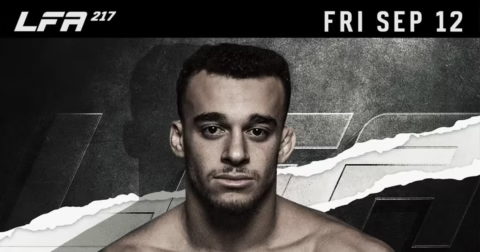Alexander Romanov’s path to PFL glory took an unexpected and painful detour in Chicago. The heavyweight semifinal against Valentin Moldavsky ended almost as soon as it started, leaving fans stunned.
A sudden and accidental groin strike dropped Romanov to the mat, visibly unable to continue. He was eventually stretchered out of the cage, and the fight was ruled a no-contest.
What does this mean for Romanov’s chances in the final? How will the injury affect his preparation, and what support do fighters really have off-camera? This article will explore the aftermath, the tournament impact, and what comes next for Romanov.
A Promising Comeback Cut Short for Alexander Romanov
In March 2025, MMA Fighting highlighted Romanov as a recently ranked UFC heavyweight. He had exited the UFC after mixed results but remained an acclaimed force in the division. His move to the PFL was seen as a fresh opportunity to rebuild momentum.
Entering the 2025 PFL tournament, he looked sharp, focused, and physically prepared. In the opening round, he secured a dominant submission victory over Tim Johnson.
Anticipation was high as he advanced to face Valentin Moldavsky in the semifinals. The bout was widely seen as one of the night’s most competitive matchups. But just as the action began to build, Romanov took a sudden strike to the groin.
The impact left him unable to stand or fully extend his leg. Medical staff rushed in and ultimately made the call to remove him from the cage. Fans expecting fireworks were instead left stunned by an abrupt and painful ending.
The Shock Inside Wintrust Arena at PFL Semifinals
The crowd at Wintrust Arena shifted from excitement to silence within seconds. Romanov collapsed on the mat in visible agony from the unexpected strike. Referees and cage-side officials reacted swiftly to evaluate the unfolding situation.
Moldavsky stepped away and appeared remorseful after understanding what had just happened. Commentators paused as it became clear this was more than a minor foul. After several minutes, medics arrived and brought out a stretcher for Romanov. The crowd remained stunned as officials ruled the fight a no-contest immediately.
For those unfamiliar, The Manual states that a no contest usually happens when a fight ends for reasons beyond a fighter’s control. This often includes accidental fouls like eye pokes or groin strikes that cause sudden injury. When a fighter cannot continue, the bout is stopped, and no winner is declared. If the foul is later ruled intentional, the result changes to a loss for the offender.
Such stoppages are rare but highlight how unpredictable MMA truly can be. Even seasoned fighters and fans felt the emotional weight of that moment.
Medical Aftermath and Tournament Implications for Romanov
Doctors confirmed Romanov could not continue due to the groin area trauma. Since the bout was short, PFL rules marked it as a no-contest. Romanov advanced to the final based on his earlier tournament victory.
The decision sparked debate among fans and fellow fighters on social media. While rules were followed, some questioned fairness given the unclear fight outcome. Romanov’s health now becomes the biggest factor ahead of the championship final.
Groin injuries can severely affect movement, flexibility, and overall athletic performance. Cleveland Clinic mentions that most people recover from a mild or moderate groin injury within one to two months. More severe groin injuries often take several months to fully heal and regain full strength. Healing time depends heavily on injury grade, age, activity level, and post-injury rehabilitation.
Facing Oleg Popov could be much harder if recovery is incomplete. The injury has left Romanov’s title hopes hanging in a delicate balance.
Support Beyond the Octagon for Injured Fighters
Athletes often face more than just physical pain after a significant in-competition injury. Mental strain, media scrutiny, and sudden income loss can quietly unfold behind the scenes. Romanov’s injury occurred in front of a packed arena and a global audience. That kind of spotlight can magnify stress during an already vulnerable moment.
Fighters often lean on medical teams, managers, and recovery professionals to navigate the aftermath. In high-stakes tournaments, a single injury can carry serious financial consequences. This is where legal advisors often become a vital part of a fighter’s support network. Local personal injury attorneys can offer valuable legal guidance because they’re well-versed in area-specific laws.
For example, in this case, consulting the best personal injury lawyer in Chicago would be a wise decision for navigating local legislation.
According to TorHoerman Law, personal injury lawyers examine detailed records to understand how and why an injury happened. They work with medical experts and technical specialists to strengthen the evidence behind a claim. In Romanov’s case, legal guidance could help clarify compensation and recovery support options.
Legal support is just one piece of a much broader recovery puzzle. Injured fighters also depend on physiotherapists, counsellors, and nutritionists to regain physical strength and mental stability. For Romanov, this may include reworking training schedules, managing media pressure, and revisiting sponsorship commitments. What happens outside the cage often shapes how quickly and confidently a fighter can return to it.
What This Means for the PFL Heavyweight Division
Romanov’s unclear status brings unpredictability to the PFL heavyweight bracket finale. Injuries like this create ripple effects through rankings and tournament structure alike. The division may need last-minute adjustments if Romanov cannot safely compete.
Tapology reports that Alexander Romanov is scheduled to face Oleg Popov on August 21, 2025. The bout will take place in Hollywood, Florida, as part of the PFL World Championship lineup. However, the matchup dynamics could shift depending on Romanov’s physical condition and timeline.
If he participates but is compromised, it could affect the fight quality. A withdrawal could give Moldavsky or another athlete an unexpected second chance. This incident reminds everyone how fragile championship runs can quickly become.
FAQs About Alexander Romanov’s Injury and PFL Future
How did Moldavsky’s style influence Romanov’s strategy?
Romanov had to prepare for a highly technical grappler with strong defensive awareness. His camp emphasized clinch breaks and cage control to prevent prolonged exchanges in Moldavsky’s preferred zones. This required tailored sparring partners who could replicate Moldavsky’s footwork and upper-body strength.
Can Romanov request a rescheduling of the final?
There is no formal mechanism for rescheduling unless both fighters agree under extraordinary circumstances. Any postponement would also require broadcaster and commission approval, which adds logistical challenges. A reschedule could affect the financial integrity of an entire fight card and promotional schedule.
What role do sponsors play in recovery timelines?
Sponsors may provide financial or logistical support, such as covering therapy costs or travel arrangements. Long-standing partners often adapt expectations during recovery periods rather than canceling deals prematurely. However, newer sponsorships can dissolve quickly if fighter exposure drops for extended periods.
Romanov’s painful groin injury shows how quickly things can change in combat sports. One unexpected strike disrupted months of training and shifted his entire tournament trajectory in seconds. His advancement to the final despite the no-contest reflects how tournament rules reward past performance.
But the bigger battle now involves healing physically and mentally before stepping into the cage again. Recovery is never just about the body, as it includes emotional, financial, and legal support. Fighters need full teams behind the scenes to manage uncertainty and protect their future.



 Subscribe
Subscribe




